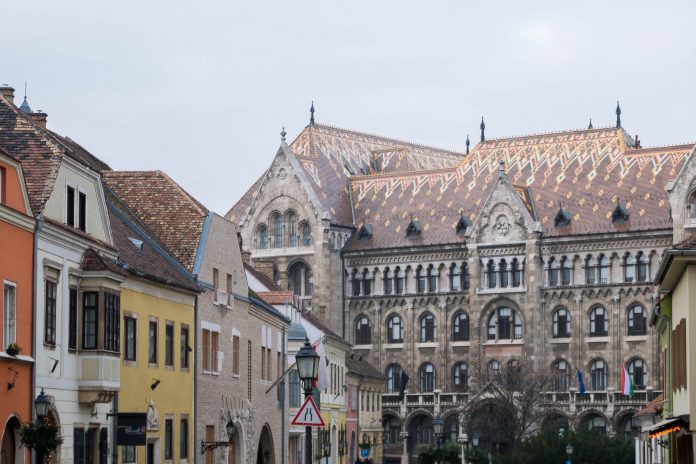Das Burgviertel im Stadtteil Buda erhebt sich auf dem knapp 170m hohen Hügel am Donauufer von Budapest. Einst Sitz der ungarischen Könige und Adeligen beherbergt es bis heute prachtvolle historische Baudenkmäler.
Das Burgviertel auf dem Burgberg in Budapest ist wohl die bekannteste und wichtigste Sehenswürdigkeit der ungarischen Hauptstadt. Viele Besucher assoziieren mit dem Burgviertel den imposanten Burgpalast, tatsächlich erstreckt sich das Burgviertel jedoch neben diesem vom Wiener Tor bis zum Platz Szent György tér. Es schließt unter anderem berühmte Bauwerke wie die Matthiaskirche und die Fischerbastei ein, zwei unserer Top 10 Sehenswürdigkeiten von Budapest.
Das Burgviertel in Buda ist etwa 1,5km lang und 500m breit, weitgehend autofrei und kann zu Fuß leicht erforscht werden. Auf den Budaer Hügel führen mehrere Treppen und im Osten fährt auch eine Seilbahn nach oben – von hier hat man den wohl prächtigsten Blick auf die Kettenbrücke, eine unserer 7 schönsten Brücken von Budapest, die am Fuß des Hügels über die Donau führt.
Inhaltsverzeichnis
Wiener Tor
Der beliebteste Eingang zum Burgviertel ist das Wiener Tor am Bécsi kapu tér. Hier halten auch die Busse, die jeden Tag tausende Touristen zum Burgviertel bringen. Eine Gedenktafel an der Innenseite des Tores erinnert an die Befreiung Budas von den Türken im Jahr 1686, zu deren 250. Jahrestag es errichtet wurde. Rechts neben dem Wiener Tor liegen das Ungarische Staatsarchiv und die Anjou-Bastei, die während der Türkenbefreiung heftig umkämpft war.
Táncsics Mihály utca
Die Táncsics Mihály utca hieß einst Judengasse und ist die älteste Straße des Burgviertels. Heute ist sie nach dem ungarischen Schriftsteller Mihály Táncsics benannt. In dieser Straße befinden sich das ungarische Landesdenkmalamt, das Museum für Musikgeschichte und eine ehemaliges jüdisches Bethaus, in dem heute das Leben der Juden in Ungarn vorgestellt sowie Reste einer Synagoge aus dem 15. Jahrhundert zu sehen sind.
Vorbei am Andreas-Hess-Platz mit einer Statue von Papst Innozenz XI. und einem der ältesten Gasthöfe des Burgviertels mit einem roten Igel über dem Tor geht es auf der Táncsics Mihály utca weiter bis zum berühmten Dreifaltigkeitsplatz.
Dreifaltigkeitsplatz
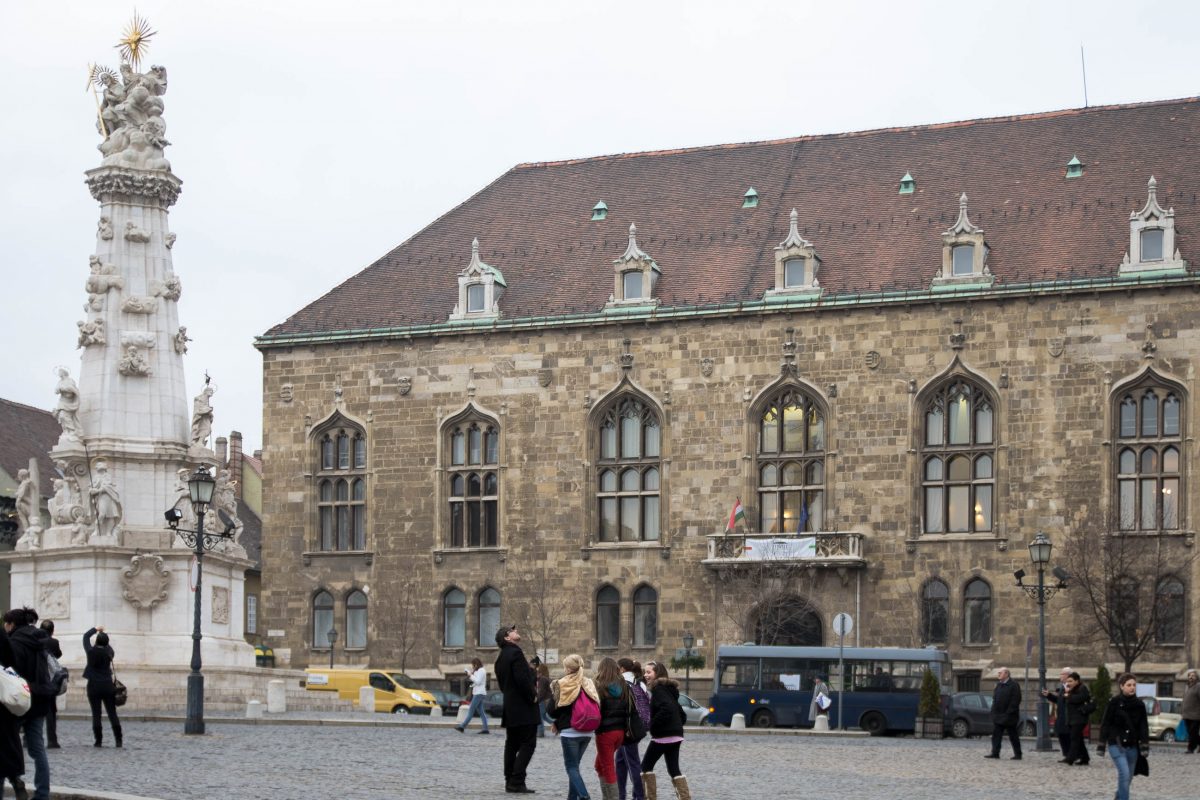
Der Szentháromság tér ist der zentrale Platz des Burgviertels, auf dem eine 14m hohe Pestsäule aus dem 18. Jahrhundert thront (das Originaldenkmal wurde im Zweiten Weltkrieg stark beschädigt). Östlich der Säule ragt die prachtvolle Matthiaskirche in den Himmel, die wohl berühmteste und schönste Kirche von Budapest. Sie wurde im 13. Jahrhundert von König Béla IV. errichtet wurde und auch als Krönungskirche bekannt ist.
Gleich daneben verschandelt der moderne Bau des Hilton-Hotels den historischen Platz. Der Klotz musste sich in die Überreste der mittelalterlichen Bauten einfügen und hat dem Dreifaltigkeitsplatz leider einiges von seinem gotischen Flair geraubt.
Der Andreas-Hess-Platz ist nach dem Betreiber der ersten öffentlichen Druckerei Ungarns benannt, die in einem Haus gegenüber untergebracht war. Am Fuß der Treppe des südlichen Turms in der St. Michael-Friedhofskapelle wird die Geschichte der Papierproduktion vorgestellt.
Gegenüber der Matthiaskirche liegt das ehemalige Rathaus von Buda. Das zweistöckige Barockgebäude enthält heute das Sprachwissenschaftliche Institut der Ungarischen Akademie der Wissenschaften und beeindruckt durch sein architektonisch interessantes Treppenhaus und den Innenhof.
Fischerbastei
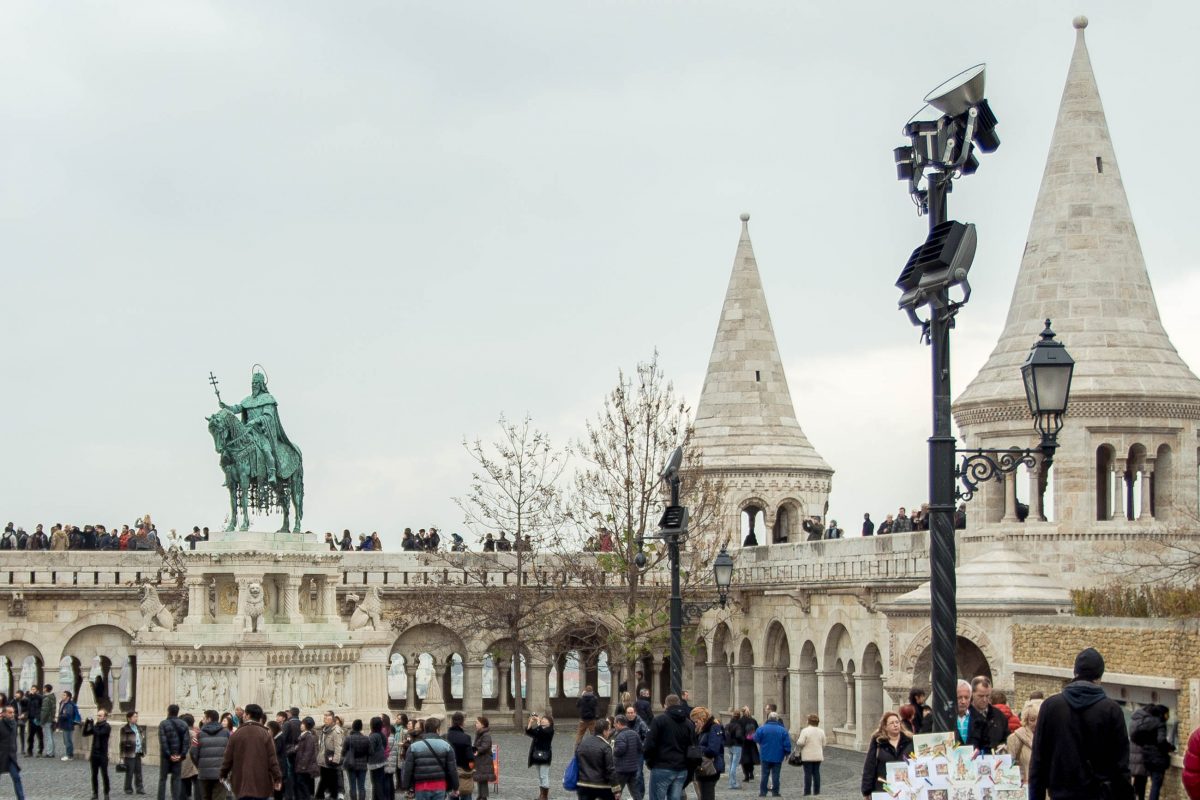
Im Norden der Matthiaskirche umfassen die Mauern der Fischerbastei den Burgberg. Mit ihren zahlreichen Treppen, Türmen und Zinnen sowie Reste der alten Stadtmauer erinnert sie an eine mittelalterliche Burg. Das weitläufige Bauwerk wurde 1987 gemeinsam mit dem gesamten Burgviertel und den Donauufern durch die UNESCO zum Weltkulturerbe erklärt.
Erbaut wurde die Fischerbastei von Frigyes Schulek in den Jahren 1895 bis 1902 für die Fischergilde von Buda am Standort des ehemaligen Fischmarktes, daher auch der Name. Im Mittelalter lag es in der Verantwortung der Fischergilde, diesen Teil der Stadtmauer zu verteidigen, der heute als architektonisches Juwel am Burgberg Budas glänzt.
BILDER: Fischerbastei
Fotogalerie: Fischerbastei in Budapest
Besuch der Fischerbastei
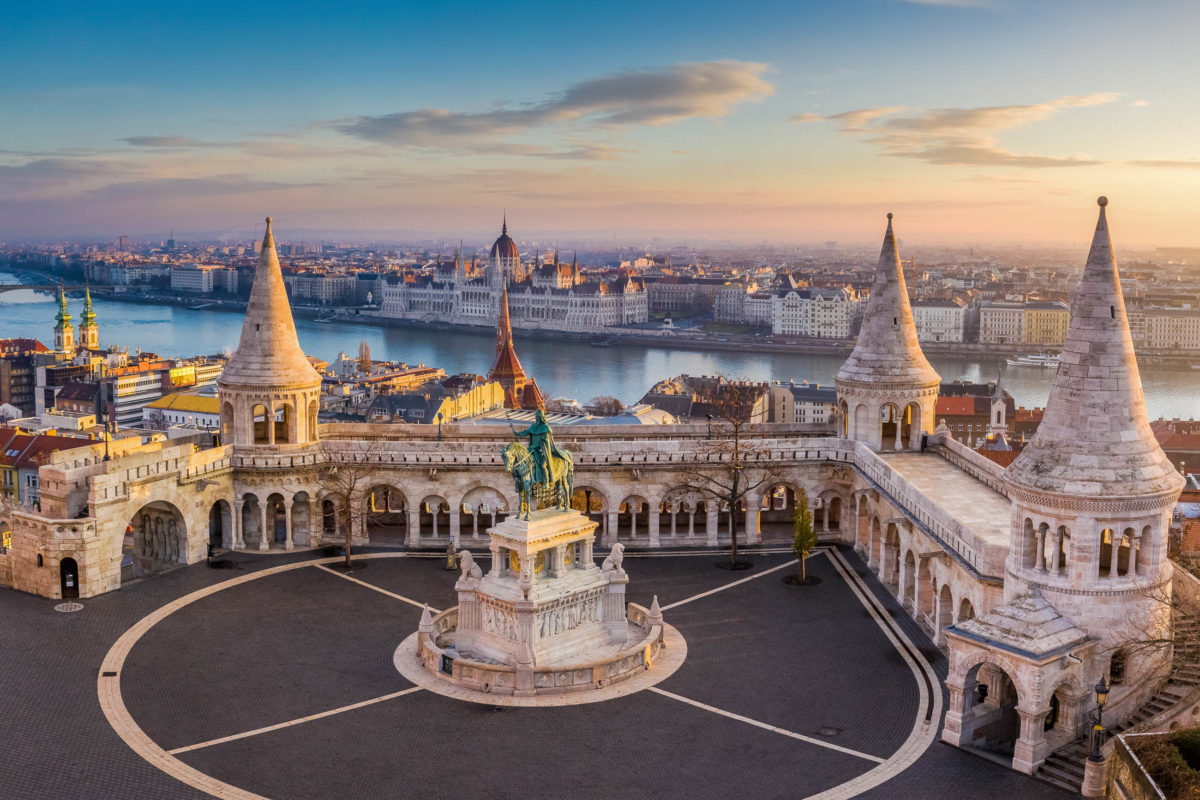
Heute ist die prachtvolle Fischerbastei eine unserer Top 10 Sehenswürdigkeiten von Budapest. Mit ihren konischen Türmchen und Zinnen erinnert die Fischerbastei beinahe an ein Märchenschloss oder eine mittelalterliche Burg. Die sieben Türme sollen an die Zelte der Magyaren erinnern und stehen für deren sieben Stämme, die im Jahr 896 in der pannonischen Tiefebene heimisch waren.
Panoramablick von der Fischerbastei
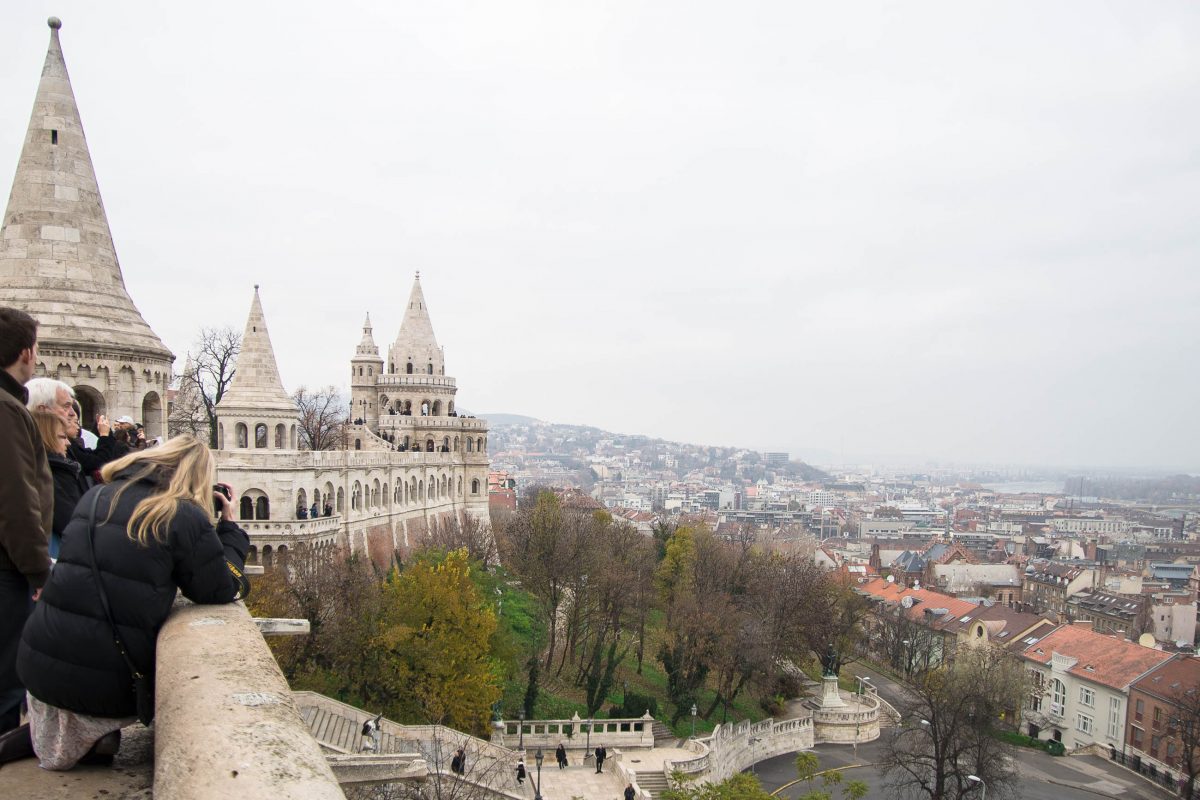
Schon der Spaziergang von den Ufern der Donau auf den Burgberg hinauf belohnt immer wieder mit prachtvollen Aussichtspunkten über Budapest. Läuft man die 140m langen Mauern der Fischerbastei mit ihren Treppen, Gängen, Wegen und Aussichtsbereichen bis zur Terrrasse der Fischerbastei entlang, eröffnet sich einem ein fantastischer Ausblick über die Stadt, den Stadtteil Pest, die Kaiserin-Elisabeth-Brücke und die Kettenbrücke über der Donau, die Margareteninsel mit der gleichnamigen Brücke sowie den Gellért-Hügel. Alle drei dieser Brücken zählen übrigens zu unseren 7 schönsten Brücken von Budapest.
König Stephan I. auf der Fischerbastei
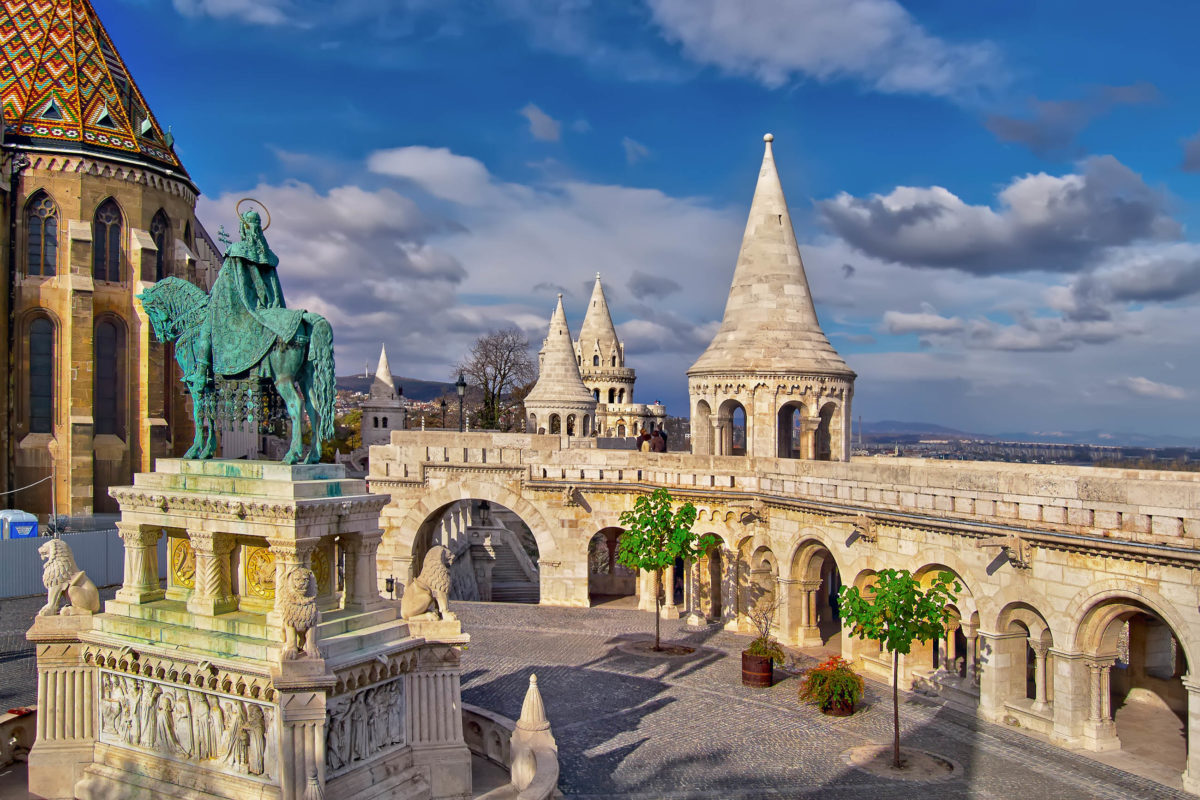
Direkt vor der Fischerbastei thront eine Reiterstatue von König Stephan I., dem ersten christlichen König Ungarns, dem auch die größte Basilika von Budapest gewidmet ist. Die Statue stammt aus dem Jahr 1906 und wurde von Alajo Stróbl entworfen.
Die Pläne zum Sockel der Statue stammen vom Erbauer der Fischerbastei. Dieser schmückte ihn mit Löwenfiguren und Szenen aus dem Leben von König Stephan I., darunter die „Krönung“, die „Huldigung von Wien“, die „Gesetzesverkündung und der „Kirchenbau“. Bemerkenswert ist, dass der König seinen Blick nicht auf die Stadt, sondern auf die nahe gelegene Matthiaskirche richtet.
Bis zum Burgpalast
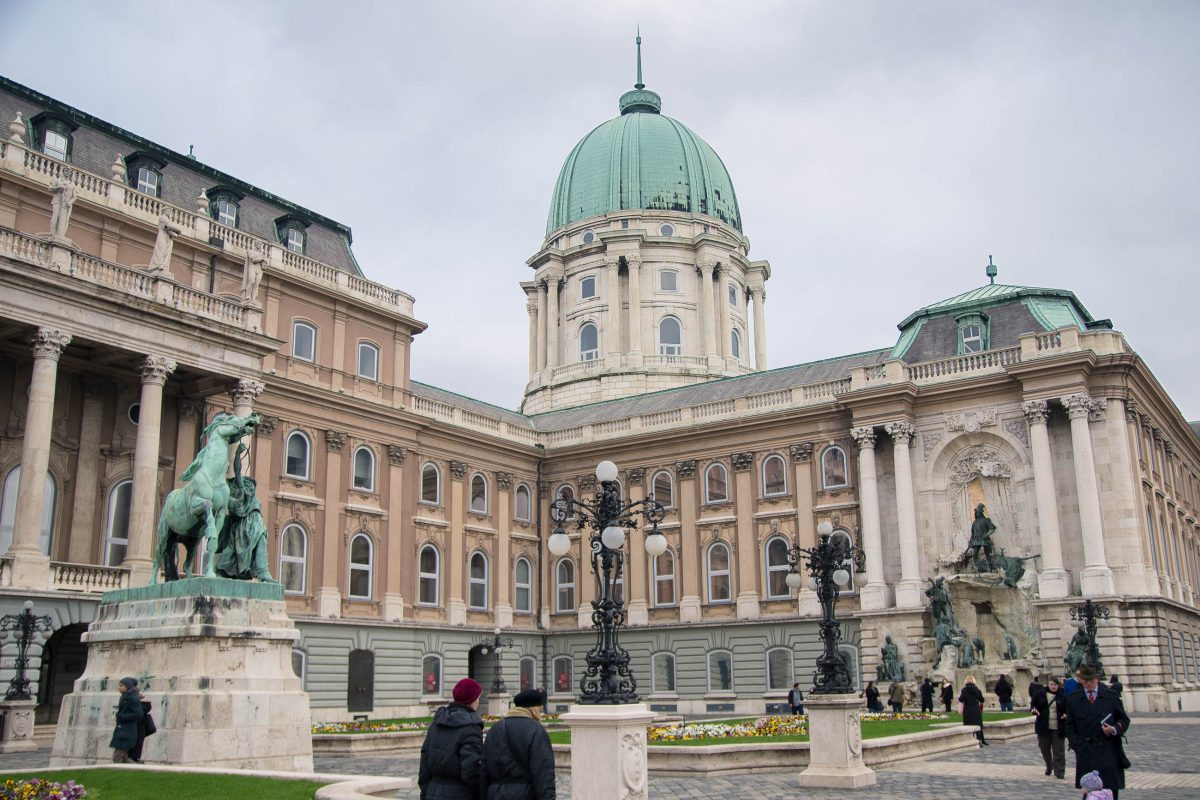
Über die Gasse des Schatzmeisters (Tárnok utca ) und den Ehrenplatz (Dísz tér) geht es weiter zum monumentalen Burgpalast, dem wohl bekanntesten und auffälligsten Bau Budapests.
In der Gasse des Schatzmeisters verdienen die wunderschönen Fassaden der gotischen Handelshäuser und das Apothekenmuseum „Goldener Adler“ einen zweiten Blick. In der an den Ehrenplatz anschließenden Színház utca sind das Burgtheater und der Sándor-Palast, Sitz des amtierenden ungarischen Staatspräsidenten, erwähnenswert.
Am Ende der Színház utca thronen bereits die ersten Vorgebäude des Burgpalastes, das größte Gebäude von Ungarn, das genau genommen nicht mehr Teil des Burgviertels ist. Es beherbergt heute einige Museen sowie die größte Bibliothek Ungarns und zählt seit 1987 gemeinsam mit dem Uferbereich der Donau zum Weltkulturerbe der UNESCO.
Herrengasse (Úri utca)
Den Rückweg durch das Burgviertel nimmt man am besten über die Herrengasse, deren Geschichte bis ins 13. Jahrhundert zurück reicht. An den prächtigen Häusern im barocken und klassizistischen Stil ist heute noch zu erkennen, dass hier einst die Adeligen und reichen Kaufleute der Stadt wohnten. Früher waren auch Romanik und Gotik in der Herrengasse vertreten, diese Bauten wurden jedoch zum Großteil während der Türkenkriege zerstört.
Im Haus Nr. 9 in der Úri utca liegt der Eingang zu dem 24km langen Höhlensystem, das sich bis unter den Burgpalast erstreckt. In Kriegszeiten zog sich hier die Budaer Bevölkerung mit ihren Vorräten zurück und auch die deutsche Wehrmacht hatte im Zweiten Weltkrieg in dem Tunnel-Labyrinth ihr Hauptquartier aufgeschlagen.
Im Telefonmuseum kann die weltweit erste funktionierende Telefonzentrale bestaunt werden. Die Herrengasse führt bis zum Kapisztrán-Platz (Kapisztrán tér) mit dem Kriegshistorischen Museum, welches die über die Kriege in Ungarn seit dem 16. Jahrhundert informiert. Gegenüber liegt wiederum das ungarische Staatsarchiv, somit ist der Rundgang durch das Burgviertel abgeschlossen.
Geschichte des Budaer Burgviertels
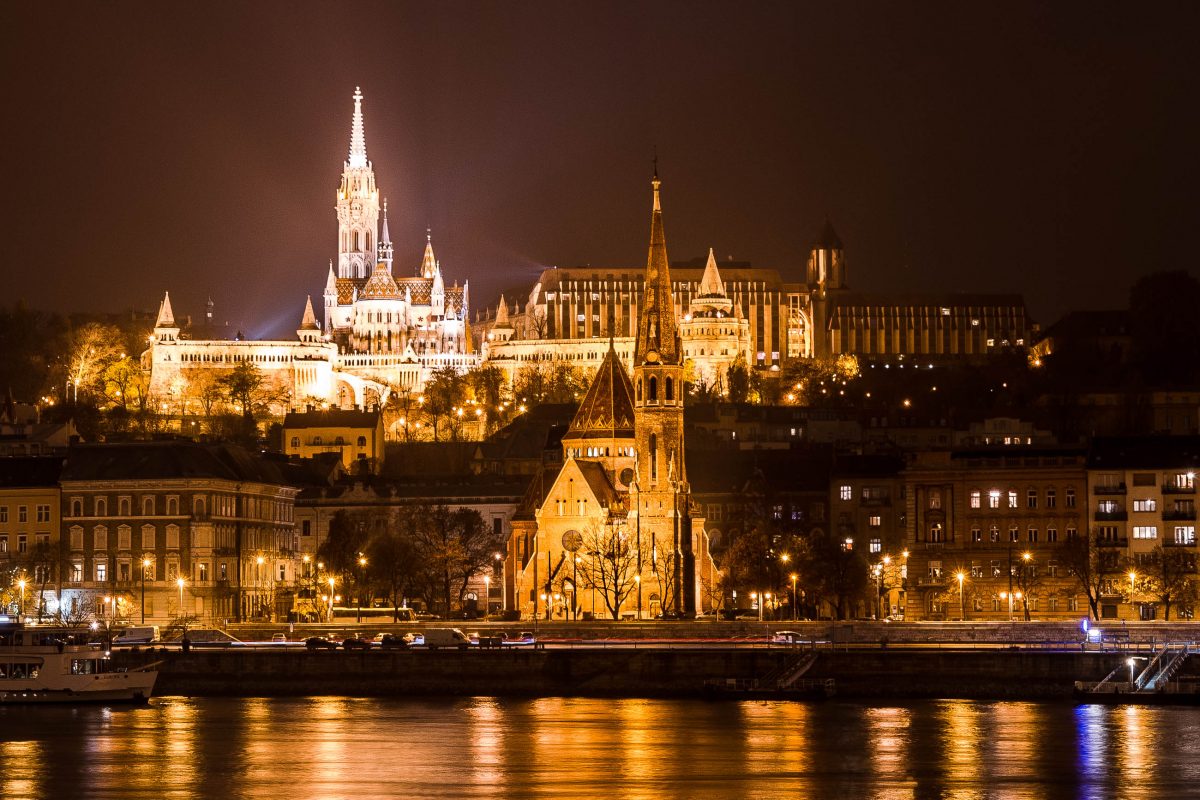
Der Burgberg am rechten Donauufer wurde im 13. Jahrhundert unter dem ungarischen König Béla IV. zum Schutz vor den Mongolen das erste Mal bebaut. Der 168m hohe Hügel wurde damals nicht nur als Befestigungsanlage, sondern auch als würdiger Sitz eines Königs empfunden und so entstand damals im Südosten des Burgberges die erste Version der Budaer Burg (heute bekannt als Burgpalast). Im Nordwesten entstanden prachtvolle Bürgerhäuser, die vor allem in der Herrengasse zu bestaunen sind.
Während der Türkenkriege und im Zweiten Weltkrieg wurde das Burgviertel zu einem Großteil zerstört, jedoch anschließend wieder neu aufgebaut. Im Zuge der Rekonstruierungen stießen die Baumeister bei vielen Gebäuden auf ihre Grundmauern aus dem Mittelalter. Mit Hilfe von Archäologen bemühte man sich, das Burgviertel so originalgetreu wie möglich wieder auferstehen zu lassen.

